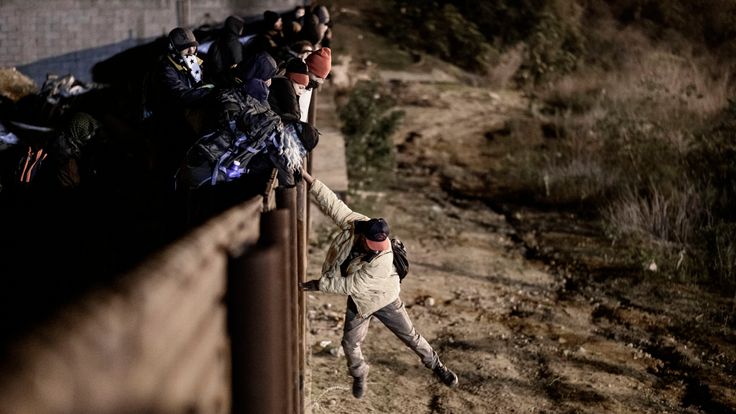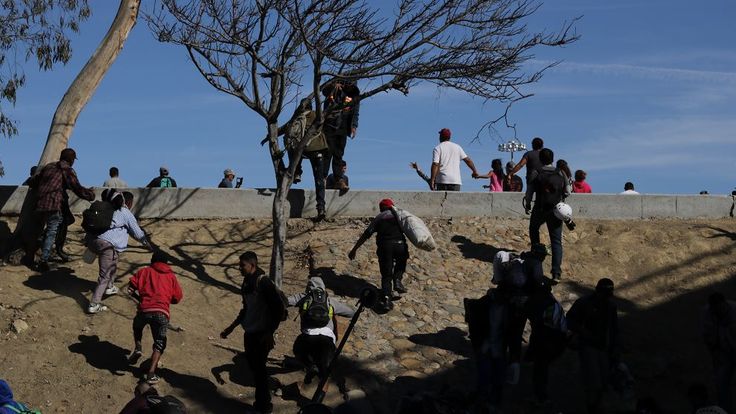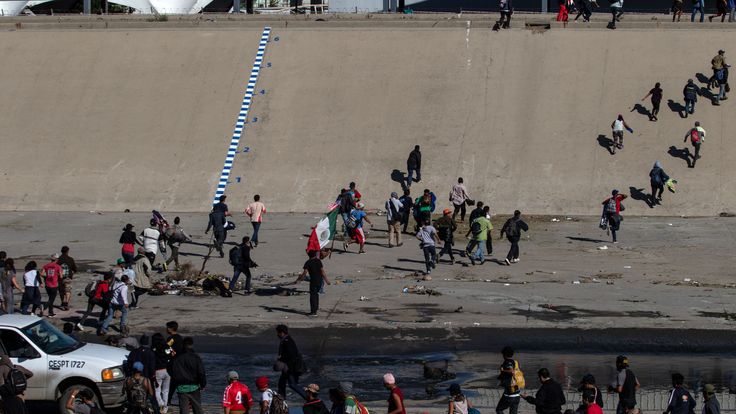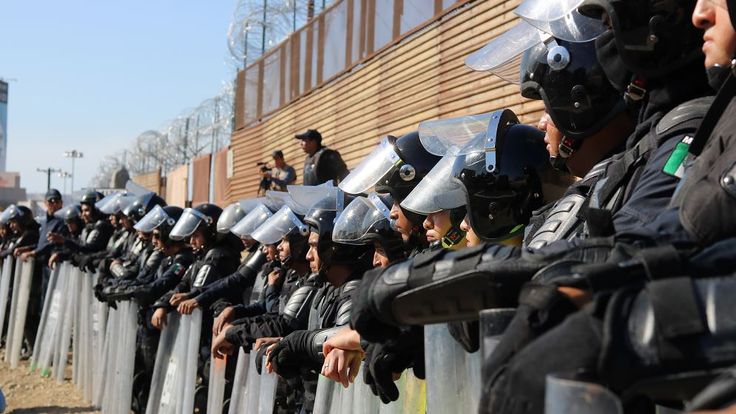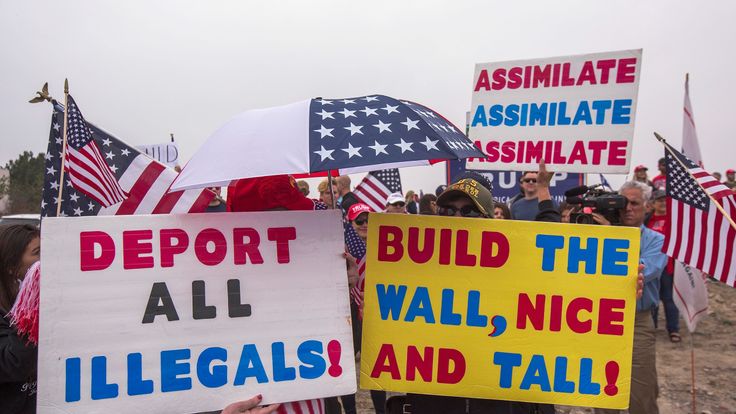Fact check: Trump's immigration speech in bid for border wall funding
By Alix Culbertson, news reporter
On the 29th day of the US government shutdown over funding for Donald Trump’s border wall, the president gave a speech in an attempt to strike a deal with Democrats to end the impasse.
He made many assertions and a few offers to get the border with Mexico secured.
Sky News fact checks the claims and figures in his speech:
Claim: A new proposal
Reality: Not really
Donald Trump billed his proposal as being new and even more compromising than ever before, but his offer is pretty much the same as one he handed to Congress earlier this month.
He also used many of the same facts, figures and stories as his first ever speech from the Oval Office on day 18 of the partial shutdown.
In Saturday’s speech he announced funds would be made available for humanitarian aid, border agents, law enforcement personnel, technology, and immigration judges – which he also did last week.
However, he also included promises to provide three years of deportation relief to “dreamers” – about 700,000 undocumented immigrants who were brought to the US as children.
Mr Trump also announced 300,000 immigrants whose protected status is facing expiration will now have a three-year extension of their status “so that Congress can work on a larger immigration deal”.
But, the Democrats rapidly rejected the proposal, with House Speaker Nancy Pelosi calling it a “non-starter”.
Claim: “There is a humanitarian and security crisis on our southern border that requires urgent action”
Reality: Arguably true, depending on your interpretation, but the situation is considerably less severe than previous years
US government figures show 396,579 people were arrested by US Border Patrol for the 2017-18 financial year at the Mexico border.
But the number is dramatically lower than in the early 2000s when up to one million people were routinely apprehended annually.
2017 marked a historic low of about 300,000 so there has been an increase this year – possibly due to removal quotas of 700 people a year for immigration judges being introduced for the first time ever in October – but nowhere near as severe as previous years.
Claim: “One in three women is sexually assaulted on the dangerous journey north”
Reality: True. But the figures could actually be even worse
The president has used this fact before, and according to data from Doctors Without Borders, he is almost right.
They found that 68.3% of migrants and refugees “entering Mexico reported being victims of violence during their transit toward the United States”.
Nearly a third of women said they had been sexually abused – but many women have also chosen to flee their home countries for the US precisely because of sexual abuse at home.
Amnesty International actually found that 80% of women were raped or sexually assaulted during the migration process.
Claim: “Many loving mothers give their young daughters birth control pills for the long journey up to the United States”
Reality: Semi-true
Medical volunteers have been providing free birth control to women in the migrant caravans which have been making their way to the US border.
Some women have said they have made sure they have birth control before they came to protect themselves, but it is not clear if mothers have been giving it to their daughters.
Claim: “The lack of border control provides a gateway… for criminals and gang members to enter the United States”
Reality: True – but possibly not to the extent he is saying
Mr Trump is jumping on what the Department of Homeland Security said in October.
Its press secretary said the department could “confirm that there are individuals within the caravan who are gang members or have significant criminal histories”.
In November a Honduran member of the notorious MS-13 gang admitted to US Border Patrol officials, after they spotted him in California, that he joined a caravan of migrants to reach the border undercover.
However, some of the most dangerous criminals do not enter the US illegally via the southern border, but on flights – like the Honduran president’s brother who was arrested in Miami Airport in November for importing tonnes of cocaine into the US over 12 years.
Claim: “Heroin alone kills 300 Americans a week; 90% of which comes across our southern border”
Reality: True
The US Centres for Disease Control and Prevention (CDC) found that in 2017 15,482 people died from heroin overdoses in the US.
Analysis of heroin samples by the US Drug Enforcement Administration (DEA) found 86% of the drug samples in 2016 were from Mexico.
Claim: “[A border wall] will save many lives and stop drugs from pouring into our country”
Reality: Not true
Most narcotics come through legal ports of entry in packages, as cargo, or with people entering the US legally.
The DEA’s 2018 annual drug threat assessment found most of the heroin coming into the US is smuggled in privately-owned vehicles and lorries at legal ports of entry, mixed in with legal goods.
Marijuana is the only drug where more is smuggled in at illegal points than at legal ports, the DEA found.
There was a 38% increase in methamphetamine at the Mexico border from 2017 to 2018, with 30,523kg (67,292lb) seized at legal ports of entry.
Border Control agents seized 4,664.3kg (10,283lb) of meth in between ports.
Claim: “A see-through steel barrier”
Reality: Is Trump wavering from his wall promise?
Mr Trump has always been insistent the US-Mexico border would have a wall, with “build the wall, build the wall” being his most memorable campaign call.
The Oxford English Dictionary definition of a wall is: “A continuous vertical brick or stone structure that encloses or divides an area of land.”
The fact he is starting to call it see-through brings about a few questions, namely, will it actually be a fence?
He announced last week that he had made a concession to the Democrats by making the wall steel instead of concrete or brick, but it was not seen as much of a giveaway.
Mr Trump has also taken to calling the wall a “barrier” instead – he only called it a wall once during his speech on Saturday.
Source: Read Full Article
